
5 Ways to Use Popular Board Games for Learning
Customize popular fun games to teach individualized learning objectives. LessonPix has easy to make templates that fit into Cariboo, Headbandz, Guess Who, and Matching+ Match & More by Chuckle & Roar.

1. Guess Who? from School (or photos of people the child knows)
Guess Who? is a popular classic game by Hasbro for kids ages 6 and up. This powerful games promotes numerous skills including: questioning, deductive reasoning, listening, turn-taking, camparision, scanning, and more.
Use photos of people the students know to make an individualized game of Guess Who?: family members, classmates, school staff, or community workers. Additional visuals can support asking questions to help determine who is your person.
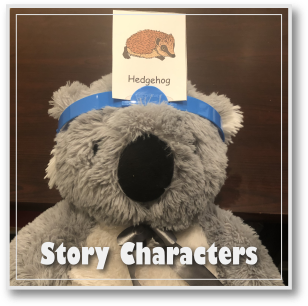 2. Headbandz Story Characters
2. Headbandz Story Characters
After reading "The Mitten" by Jan Brett, students can play a game of Headbandz by Spinmaster. Each student wears a headband with a picture of a character from the story and use clues from their classmates to figure out which character they have on their head. After the game, students can act out the story as their character.
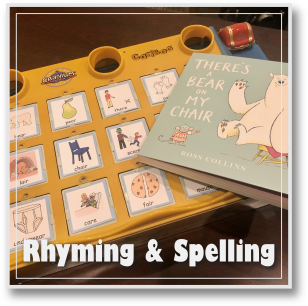 3. Cariboo Story Vocabulary, Rhyming, and Spelling
3. Cariboo Story Vocabulary, Rhyming, and Spelling
4. Zingo: B-S Maximal Pairs (and other articuation objectives)
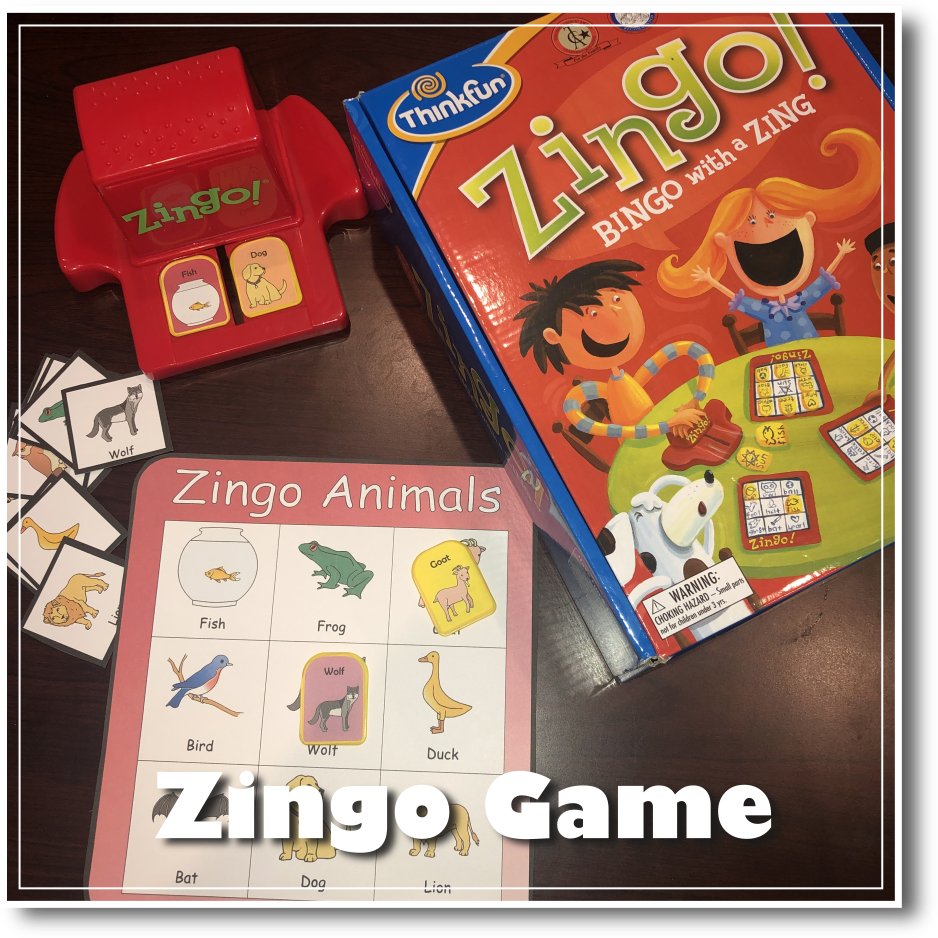 Print on sticker paper to customize the game of Zingo (made by Thinkfun). This template already has a yellow border to match the tiles to make cutting look great. And since the tiles are identical on both sides, you can still keep the original game and replace the other side with your custom pictures.
Print on sticker paper to customize the game of Zingo (made by Thinkfun). This template already has a yellow border to match the tiles to make cutting look great. And since the tiles are identical on both sides, you can still keep the original game and replace the other side with your custom pictures.
Here is a game using /b/ and /s/ words for maximal pairs game. I color coded pairs of words to place next to each other in the Zingo game. When the student slides the handle, 2 same color tiles should emerge with a maximal pair to practice.
Maximal pairs are words that differ by only one phoneme, but the phonemes are as different as possible (placement, manner, and voice). This iexample /b/ and /s/ differ in place (labial vs coronal), manner (stop vs fricative) and voice (voiced vs voiceless). The paired words contain a phoneme in which the child is successful and the other is the target sound.
Uses with custom bingo boards. You can even use color code backgrounds to match with specific boards.
5. Guess Who? Beginning Letters Sounds (And other phonemeic / articulation objectives)
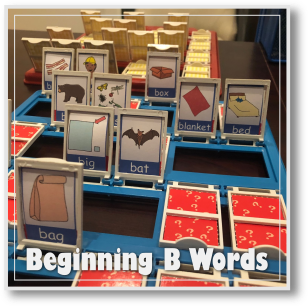
Here is another variaion for the Guess Who? game by Hasbro. Choose symbols to teach phonemic awareness or practice articulation for speech specific for your individual needs to add another layer of learning in the fun.
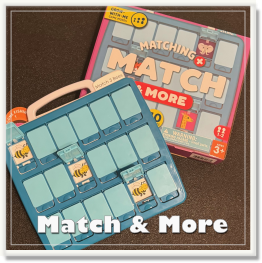 6. Match & More by Chuckle & Roar: Build attention and memory with fun reveal games.
6. Match & More by Chuckle & Roar: Build attention and memory with fun reveal games.
Can you find the pictures that match? This game shows three rows of 6 pictures, with doors covering each of the pictures. This comes with pre-made tempaltes with several different games. You can create your own similar games using artic or content to meet learning objectives.
- Try matching three pictures in a memory matching game, such as 3 bees.
- Use 16 pigs and 2 wolves on a card. Students try to get as many pigs as possible without revealing a wolf!
- Use as story starters with characters on row one, setting on row two, and action on row 3. Then tell your story as you reveal one door from each row.
 7. Play games using photos of curriculum content
7. Play games using photos of curriculum content
Using the photo upload from the phone, LessonPix members can quickly create activities to reinforce curriculum content. For example, the Lively Letters program teaches articulation, phonemic awareness, and phonetic reading and spelling. Using photos of the Lively Letters in Cranium Cariboo allows the therapist and student to continue to reinforce new skills in fun games. This is great for free time or as a reinforcement after non-preferred tasks.
Below are cards that teach story comprehension using Braidy the Story Doll (by Mindwing Concepts, Inc.) in a Headbandz game (by SpinMasters). The students can read a story and look for their part of the story that best matches their headband.
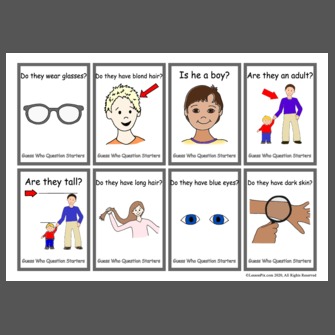

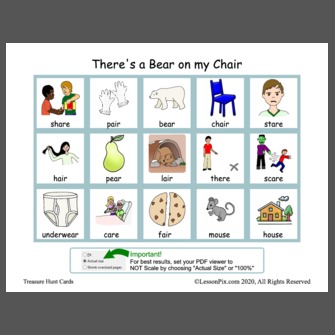
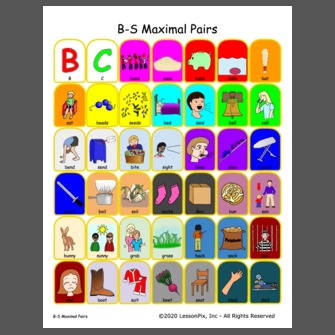
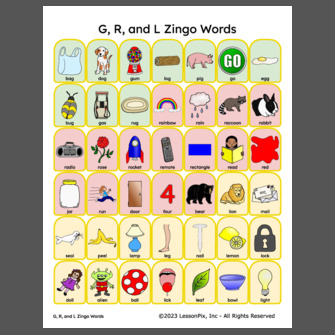


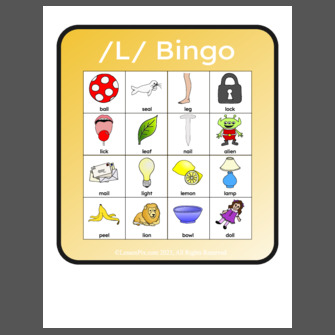
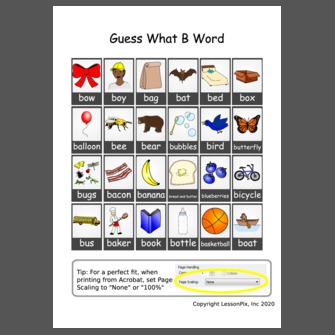
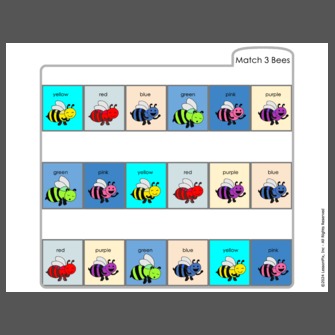

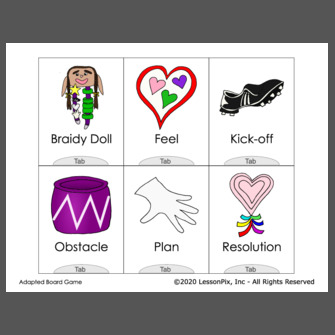
 Facebook
Facebook Twitter
Twitter Pinterest
Pinterest